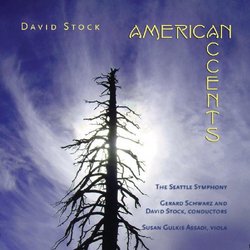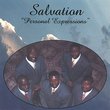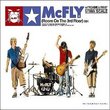| All Artists: GERARD/SEASO SCHWARZ Title: AMERICAN ACCENTS:STOCK Members Wishing: 0 Total Copies: 0 Label: Innova Original Release Date: 4/27/2004 Release Date: 4/27/2004 Genres: Jazz, Classical Styles: Forms & Genres, Concertos, Historical Periods, Modern, 20th, & 21st Century, Symphonies Number of Discs: 1 SwapaCD Credits: 1 UPC: 726708658625 |
Search - GERARD/SEASO SCHWARZ :: AMERICAN ACCENTS:STOCK
 | GERARD/SEASO SCHWARZ AMERICAN ACCENTS:STOCK Genres: Jazz, Classical
|
Larger Image |
CD DetailsSimilar CDs |
CD ReviewsMusic to discover and love N. Daniele Pietro | Milano, MI Italy | 10/07/2005 (5 out of 5 stars) "This was quite a discovery. I never heard of Mr. Stock before, then I read a passionately enthusiastic review of this disc on Fanfare, so I decided to give it a try and man, was I rewarded.
That this guy is not famous is a good measure of the depressing conservatism in which the American concert scene has fallen. If people like John Adams are much more performed here in Europe than in their country there has to be something wrong. I mean, how many Beethoven cycles can you have every year? Well, thankfully there are the recordings , and thanks to a small entreprising label we get a good sample of Stock's music in a pretty deluxe guise: the Seattle Symphony and Gerard Schwarz are a first choice, especially for this kind of repertoire, see their output for Delos , then Naxos. The main piece on the disc is , of course , the symphony, and the more I listen to it, the more I like it. It's pretty compact ( less than 30 min. ) and divided in four strongly differentiated movements. The general mood of the music is very dramatic, sometimes gloomy eminently abstract despite the composer's rather "pictorial" markings. It's always difficult to describe music with words , but in this case the composer' s makings are a good starting point, because they describe perfectly the feel you get. The first movement ( Inexorable ) relies on strong ostinato figurations over pounding timpani . It recalls a minimalistic sound, but it's clear how this composer uses minimalism as a tool to launch a piece in a propulsive way (he does the same in the viola concerto) , and not as the general style of the piece. In fact the developments are numerous , always interesting and seamless in their logic. Actually this movement, and mr.Stock's music in general, sounds a bit like a strange conflation of Philip Glass and some of the best scores by John Barry, with their swelling climaxes, plus a great knack for a proper use of percussion. The 2nd , brief, movement is indeed "Like the wind" but it's not scored in the way you could expect. Instead of feathery strings or flutes, Stock uses of percussions and woodwinds, to great and thankfully non -banal effect. The final movement, "Ominous ", relies a lot on the rumble fron the low strings, but then it opens up, and the final peroration is luminously triumphant. A convincing finale for their symphonies has always been a big problem for most 20th-21st century composers, but I believe mr.Stock pulls it off very nicely. The Viola Concerto follows the same lines , but with greater warmth and a strong lyricism that I find very seductive. The solo writing for the viola (a notoriously difficult instrument to write for) is some of the best this side of Walton. One special mention for the wonderful 3rd movement, a "Slow waltz" that, depending on my mood, I find alternatively gently melancholic or more than a little eerie. The soloist, Susan Assadi, is the first viola of the Seattle Symphony ,has a great velvety sound, commissioned the piece and audibly loves it. The final piece , American Accents, is a fast concert overture, definitevely "lighter" and more upbeat tha the other music. It's the only piece not conducted by Schwarz, but by the composer himself. It's a very effective curtain-raiser, but I think that mr. Stock's best talents reside in the "big" pieces. The Seattle Symphony sounds first class as ever , and Schwarz has the full measure of the music. Everything is recorded in full and warm, but appropriately detailed sound. If you're looking for new music that is rich and accessible, but not dumbed down, and that rewards repeated listenings, look no further. " |

 Track Listings (8) - Disc #1
Track Listings (8) - Disc #1

